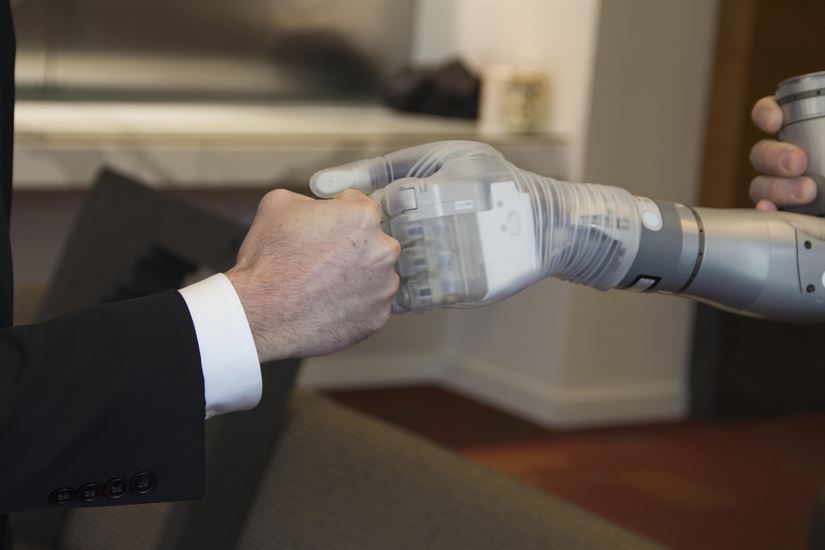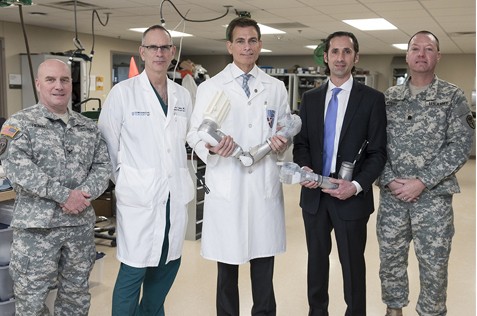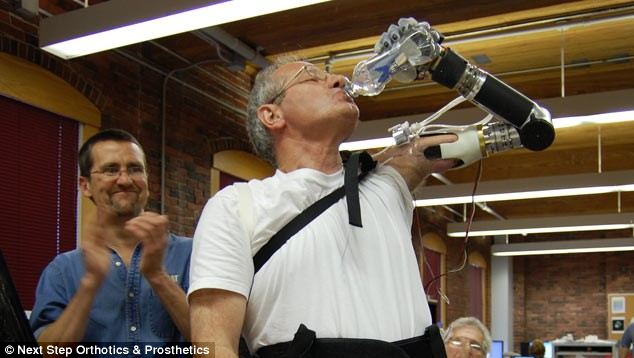The Ultimate Body Hack; The LUKE Arm Gives Veterans Freedom Again
NewsTech April 16, 2025 Damon Mitchell

Collaborating with Walter Reed National Military Medical Center, DARPA just made the FDA approved LUKE Arm (sometimes called the DEKA arm) available to wounded warriors.

(source: darpa.mil)
If you’re not familiar with DARPA, the Defense Advanced Research Projects Agency, it is the technical research and development department of the military, where they make cool robots and stuff. (At least, that’s what we know they do.)
But, back to the LUKE arm… Developed by Mobius Bionics, the LUKE arm is one of the best prosthetic arms on the market.
The ultimate body hack is a cybernetic modification. Of course, the LUKE arm is not quite the robot hand donned by its namesake, Luke Skywalker. We’re not that advanced yet, not even close.
Still, the flexibility of the LUKE arm’s applications and its ease of use mean that this gift to our wounded veterans will restore their lives to near-normal. It’s just the kind of story we love to hear about at this time of year.
Flexibility

(source: dailymail.co.uk)
LUKE can accommodate people with different levels of arm loss. For some, they only need the part from the elbow forward. Some have part of their upper arm, so they need an elbow too. Other still need the whole arm. LUKE works for all three.
The weight and length of LUKE are identical to the weight of the average adult arm, so users don’t have to suffer imbalance or sores from a heavy prosthetic.
The machinery in LUKE offers 10 powered degrees of movement, a powered shoulder and humeral rotator if needed, wrist flexor with forearm deviation, just like a natural arm.
Users can articulate those movements, using more than one at a time, so getting the arm into position is more like a real arm.
User Interface

(source: ctvnews.ca)
Few prosthetics offer that level of movement. LUKE goes even farther.
Similar to haptic feedback in Apple trackpads or gaming consoles, the fingertips on the LUKE arm provide users feedback. That way users can feel the severity of their grip, allowing them to pick up objects that they might otherwise crush or damage.
The arm is also dust and rain resident, so users don’t have to fear the tin man experience. The operation of the arm is also flexible. Users can control their LUKE with surface EMG electrodes or pressure switches.
If those options don’t work, they can install wireless controls in their shoes.
The clinical team from Mobius Bionics will work with the client to create a customized user interface that works best.

(source: defense.gov)
As for the Walter Reed donation, what better way to say thank you and happy holidays than the best we can do with current technology.
For sure, nobody wants to lose a limb. Nobody in their right mind wants to go to war either. Our war veterans have a hard enough time returning from war. Adding the loss of an arm is unimaginable to most of us.
We’re not advanced enough to give people the technology in our science fiction movies, but the LUKE arm is a much better than what we’ve had so far.
Good for them. Good on DARPA.
If you want to know more about the LUKE arm, check out Mobius Bionics site.